-
 Bitcoin
Bitcoin $99,594.2189
-3.59% -
 Ethereum
Ethereum $2,188.5793
-9.00% -
 Tether USDt
Tether USDt $1.0001
-0.02% -
 XRP
XRP $1.9745
-5.82% -
 BNB
BNB $608.9511
-3.73% -
 Solana
Solana $130.4575
-5.93% -
 USDC
USDC $1.0000
0.01% -
 TRON
TRON $0.2637
-3.59% -
 Dogecoin
Dogecoin $0.1493
-5.97% -
 Cardano
Cardano $0.5322
-6.72% -
 Hyperliquid
Hyperliquid $33.9044
3.33% -
 Bitcoin Cash
Bitcoin Cash $449.6411
-5.46% -
 UNUS SED LEO
UNUS SED LEO $8.9629
0.43% -
 Sui
Sui $2.3943
-8.35% -
 Chainlink
Chainlink $11.4402
-7.83% -
 Stellar
Stellar $0.2241
-6.49% -
 Avalanche
Avalanche $16.1489
-4.24% -
 Toncoin
Toncoin $2.7182
-5.94% -
 Shiba Inu
Shiba Inu $0.0...01040
-5.72% -
 Litecoin
Litecoin $78.7882
-4.07% -
 Ethena USDe
Ethena USDe $1.0004
-0.01% -
 Hedera
Hedera $0.1305
-7.45% -
 Monero
Monero $297.0030
-5.32% -
 Dai
Dai $0.9997
-0.02% -
 Polkadot
Polkadot $3.1834
-6.03% -
 Bitget Token
Bitget Token $3.9788
-7.03% -
 Uniswap
Uniswap $6.1327
-10.62% -
 Pepe
Pepe $0.0...08689
-8.30% -
 Pi
Pi $0.4826
-9.65% -
 Aave
Aave $219.8043
-9.69%
How does DMI deal with a gap-down opening? Do I need to stop loss when the DMI crosses below the gap?
DMI helps traders assess trend strength and direction in crypto markets, aiding decisions on stop-losses after gap-down openings.
May 26, 2025 at 07:49 pm

Introduction to DMI and Gap-Down Openings
The Directional Movement Index (DMI) is a technical indicator developed by J. Welles Wilder to help traders determine the strength and direction of a price trend. It consists of three lines: the Positive Directional Indicator (+DI), the Negative Directional Indicator (-DI), and the Average Directional Index (ADX). The DMI is widely used in cryptocurrency trading to assess potential trend changes and make informed trading decisions.
A gap-down opening in the cryptocurrency market occurs when the opening price of a trading session is significantly lower than the previous session's closing price. This can create a gap in the price chart, which can be challenging for traders using the DMI to navigate. The question often arises whether traders should implement a stop-loss when the DMI crosses below the gap.
Understanding the DMI Components
To effectively use the DMI in the context of gap-down openings, it's essential to understand its components:
+DI (Positive Directional Indicator): This line measures the upward movement in price and is calculated based on the difference between the current high and the previous high. A rising +DI suggests a bullish trend.
-DI (Negative Directional Indicator): This line measures the downward movement in price and is calculated based on the difference between the current low and the previous low. A rising -DI suggests a bearish trend.
ADX (Average Directional Index): This line measures the strength of the trend, regardless of direction. A rising ADX indicates a strengthening trend, while a falling ADX suggests a weakening trend.
DMI and Gap-Down Openings
When a cryptocurrency experiences a gap-down opening, the DMI can provide insights into the potential direction and strength of the subsequent price movement. Here's how the DMI interacts with gap-down openings:
DMI Crossover: A crossover of the +DI and -DI lines can signal a potential change in trend direction. If the -DI crosses above the +DI after a gap-down opening, it may indicate that the bearish momentum is increasing.
ADX Level: The ADX can help traders gauge the strength of the trend following a gap-down opening. A rising ADX after a gap-down opening suggests that the bearish trend is gaining strength, while a falling ADX indicates a weakening trend.
Stop-Loss Considerations with DMI and Gap-Down Openings
The decision to implement a stop-loss when the DMI crosses below a gap-down opening depends on several factors:
Trader's Risk Tolerance: Traders with a lower risk tolerance may choose to implement a stop-loss to protect their capital from significant losses. A stop-loss can be set below the gap or at a predetermined percentage of the position's value.
DMI Signals: If the -DI crosses above the +DI and the ADX is rising after a gap-down opening, it may be a strong signal to consider implementing a stop-loss. This suggests that the bearish trend is likely to continue.
Price Action: Observing the price action after the gap-down opening can provide additional context. If the price continues to decline and breaks through key support levels, it may be prudent to implement a stop-loss.
Implementing a Stop-Loss with DMI
If a trader decides to implement a stop-loss based on the DMI signals after a gap-down opening, here are the steps to follow:
Identify the Gap: Confirm the gap-down opening by comparing the current opening price to the previous session's closing price.
Monitor DMI Crossover: Watch for the -DI to cross above the +DI, indicating a potential increase in bearish momentum.
Check ADX Level: Verify that the ADX is rising, suggesting that the bearish trend is gaining strength.
Set Stop-Loss Level: Determine the stop-loss level based on the trader's risk tolerance and the price action. This could be below the gap or at a predetermined percentage of the position's value.
Execute Stop-Loss Order: Place the stop-loss order at the chosen level to automatically exit the position if the price reaches that level.
Practical Example of DMI and Gap-Down Opening
Consider a scenario where a cryptocurrency experiences a gap-down opening from a closing price of $500 to an opening price of $450. The trader is using the DMI to assess the situation:
DMI Crossover: After the gap-down opening, the -DI crosses above the +DI, suggesting an increase in bearish momentum.
ADX Level: The ADX starts to rise, indicating that the bearish trend is gaining strength.
Stop-Loss Decision: Based on the DMI signals and the trader's risk tolerance, the trader decides to implement a stop-loss. They set the stop-loss at $440, just below the gap.
Price Action: The price continues to decline, reaching $440 and triggering the stop-loss order. The trader exits the position, limiting their losses.
DMI and Gap-Down Openings: A Comprehensive Analysis
Using the DMI to navigate gap-down openings requires a nuanced understanding of the indicator's signals and the broader market context. While the DMI can provide valuable insights into trend direction and strength, it should be used in conjunction with other technical indicators and fundamental analysis for a more comprehensive trading strategy.
Combining Indicators: Traders often combine the DMI with other indicators, such as moving averages or the Relative Strength Index (RSI), to confirm signals and reduce false positives.
Fundamental Analysis: Understanding the fundamental factors driving the cryptocurrency's price can provide additional context for interpreting DMI signals after a gap-down opening.
Market Sentiment: Monitoring market sentiment and news events can help traders anticipate potential gap-down openings and adjust their trading strategies accordingly.
Frequently Asked Questions
Q1: Can the DMI be used effectively in highly volatile cryptocurrency markets?
A1: Yes, the DMI can be used effectively in volatile markets, but it's important to adjust the indicator's settings to suit the specific cryptocurrency and market conditions. Shorter time frames and lower sensitivity settings may be more appropriate for highly volatile assets.
Q2: How can I optimize the DMI settings for different cryptocurrencies?
A2: Optimizing DMI settings involves adjusting the period length for the +DI, -DI, and ADX calculations. For more volatile cryptocurrencies, shorter periods (e.g., 14 days) may be more effective, while less volatile assets may benefit from longer periods (e.g., 20 or 28 days). Backtesting different settings on historical data can help identify the optimal configuration.
Q3: Are there any other indicators that complement the DMI when dealing with gap-down openings?
A3: Yes, several indicators can complement the DMI when dealing with gap-down openings. The Bollinger Bands can help identify potential support and resistance levels, while the Parabolic SAR can provide additional trend reversal signals. Combining these indicators with the DMI can enhance a trader's ability to navigate gap-down openings effectively.
Q4: How can I avoid false signals from the DMI when trading cryptocurrencies?
A4: To avoid false signals from the DMI, traders should use additional confirmation tools, such as volume analysis and trendline breaks. Waiting for a confirmed crossover of the +DI and -DI lines, coupled with a rising ADX, can help reduce the likelihood of false signals. Additionally, using longer time frames for analysis can filter out short-term noise and provide more reliable signals.
Disclaimer:info@kdj.com
The information provided is not trading advice. kdj.com does not assume any responsibility for any investments made based on the information provided in this article. Cryptocurrencies are highly volatile and it is highly recommended that you invest with caution after thorough research!
If you believe that the content used on this website infringes your copyright, please contact us immediately (info@kdj.com) and we will delete it promptly.
- Altcoins Under Pressure: Cardano and XRP Face Critical Tests
- 2025-06-23 12:25:12
- Rare Coin Fever in Wiltshire: Auctions, Errors, and Olympic Gold!
- 2025-06-23 12:25:12
- XRP Price Under Pressure: War Fears and Market Sentiment
- 2025-06-23 12:30:12
- HAI Token Private Key Leak: What Happened and How to Stay Safe
- 2025-06-23 12:45:12
- Texas Goes All In: Bitcoin Reserve Signals Big State Embrace
- 2025-06-23 12:45:12
- Pi Network's Price Plunge: Crash, Scammer Accusations, and What's Next?
- 2025-06-23 13:05:12
Related knowledge
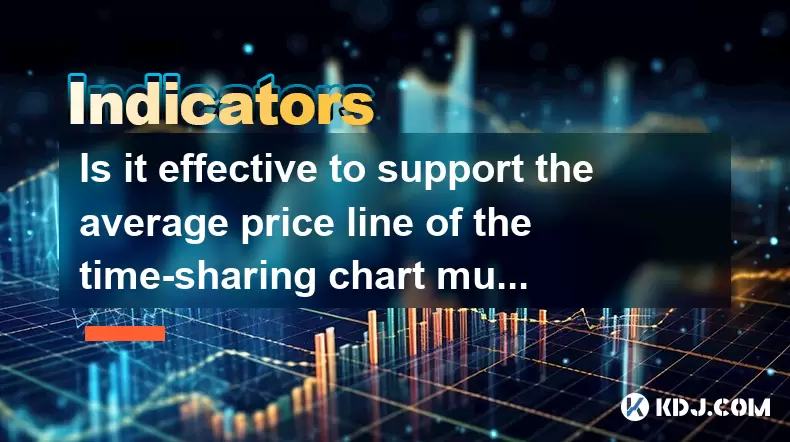
Is it effective to support the average price line of the time-sharing chart multiple times?
Jun 23,2025 at 01:36pm
Understanding the Average Price Line in Time-Sharing ChartsIn cryptocurrency trading, time-sharing charts refer to real-time price charts that display price movements over short intervals, often within a single trading day. Within these charts, the average price line, also known as the Volume Weighted Average Price (VWAP), is a commonly used technical i...
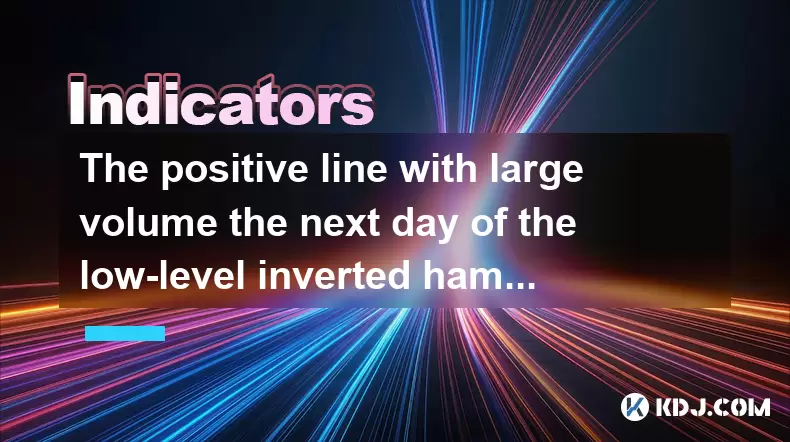
The positive line with large volume the next day of the low-level inverted hammer line confirms the reversal?
Jun 23,2025 at 01:21pm
Understanding the Low-Level Inverted Hammer LineThe inverted hammer line is a single candlestick pattern that typically appears at the end of a downtrend. It has a small real body near the bottom of the trading range and a long upper shadow, indicating that bulls attempted to push prices higher but were met with selling pressure. When this pattern forms...
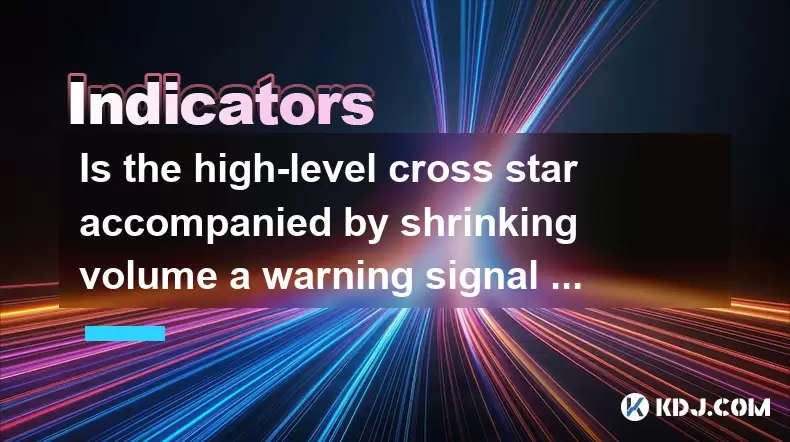
Is the high-level cross star accompanied by shrinking volume a warning signal of peaking?
Jun 23,2025 at 01:28pm
Understanding High-Level Cross Star PatternsIn the world of cryptocurrency trading, candlestick patterns are essential tools for technical analysis. One such pattern is the high-level cross star, which appears as a doji or near-doji candle at a significant resistance level. This pattern often indicates indecision in the market and can be interpreted as ...
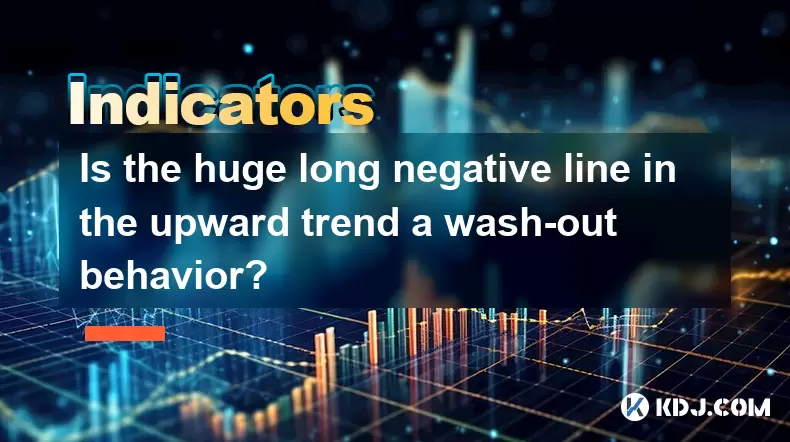
Is the huge long negative line in the upward trend a wash-out behavior?
Jun 23,2025 at 12:49pm
Understanding the Long Negative Candlestick in an Uprising TrendA long negative candlestick, often referred to as a long red or bearish candle, appearing during an upward trend can raise concerns among traders and investors. This pattern typically indicates a sudden and significant drop in price after a period of rising prices. It is often interpreted a...
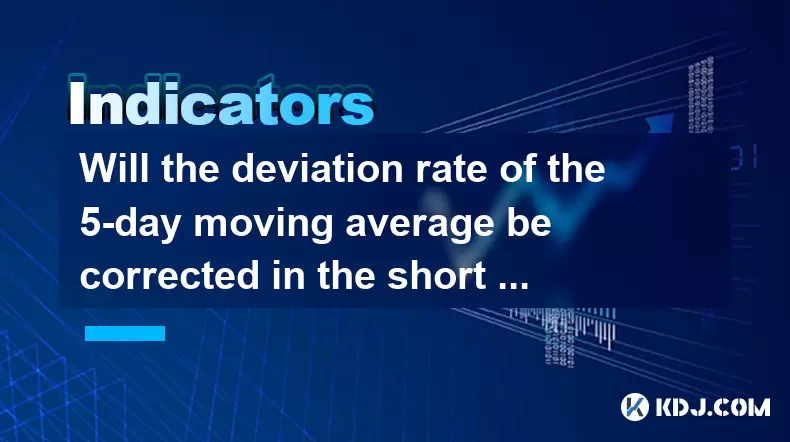
Will the deviation rate of the 5-day moving average be corrected in the short term if it is too large?
Jun 23,2025 at 02:07pm
Understanding the Deviation Rate of the 5-Day Moving AverageIn cryptocurrency trading, technical analysis plays a crucial role in evaluating price movements. One commonly used indicator is the 5-day moving average (MA), which calculates the average closing price over the past five days. The deviation rate refers to how far the current price or another m...

Can the EXPMA golden cross stand on the 5-day line at the same time?
Jun 23,2025 at 11:42am
Understanding the EXPMA Indicator in Cryptocurrency TradingThe Exponential Moving Average (EXPMA) is a popular technical analysis tool used by cryptocurrency traders to identify trends and potential reversal points. Unlike simple moving averages, the EXPMA gives more weight to recent price data, making it more responsive to current market conditions. In...

Is it effective to support the average price line of the time-sharing chart multiple times?
Jun 23,2025 at 01:36pm
Understanding the Average Price Line in Time-Sharing ChartsIn cryptocurrency trading, time-sharing charts refer to real-time price charts that display price movements over short intervals, often within a single trading day. Within these charts, the average price line, also known as the Volume Weighted Average Price (VWAP), is a commonly used technical i...

The positive line with large volume the next day of the low-level inverted hammer line confirms the reversal?
Jun 23,2025 at 01:21pm
Understanding the Low-Level Inverted Hammer LineThe inverted hammer line is a single candlestick pattern that typically appears at the end of a downtrend. It has a small real body near the bottom of the trading range and a long upper shadow, indicating that bulls attempted to push prices higher but were met with selling pressure. When this pattern forms...

Is the high-level cross star accompanied by shrinking volume a warning signal of peaking?
Jun 23,2025 at 01:28pm
Understanding High-Level Cross Star PatternsIn the world of cryptocurrency trading, candlestick patterns are essential tools for technical analysis. One such pattern is the high-level cross star, which appears as a doji or near-doji candle at a significant resistance level. This pattern often indicates indecision in the market and can be interpreted as ...

Is the huge long negative line in the upward trend a wash-out behavior?
Jun 23,2025 at 12:49pm
Understanding the Long Negative Candlestick in an Uprising TrendA long negative candlestick, often referred to as a long red or bearish candle, appearing during an upward trend can raise concerns among traders and investors. This pattern typically indicates a sudden and significant drop in price after a period of rising prices. It is often interpreted a...

Will the deviation rate of the 5-day moving average be corrected in the short term if it is too large?
Jun 23,2025 at 02:07pm
Understanding the Deviation Rate of the 5-Day Moving AverageIn cryptocurrency trading, technical analysis plays a crucial role in evaluating price movements. One commonly used indicator is the 5-day moving average (MA), which calculates the average closing price over the past five days. The deviation rate refers to how far the current price or another m...

Can the EXPMA golden cross stand on the 5-day line at the same time?
Jun 23,2025 at 11:42am
Understanding the EXPMA Indicator in Cryptocurrency TradingThe Exponential Moving Average (EXPMA) is a popular technical analysis tool used by cryptocurrency traders to identify trends and potential reversal points. Unlike simple moving averages, the EXPMA gives more weight to recent price data, making it more responsive to current market conditions. In...
See all articles

























































































